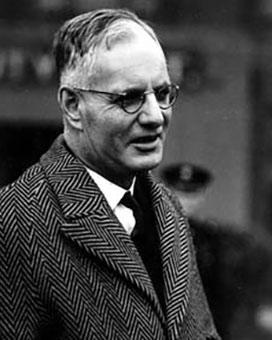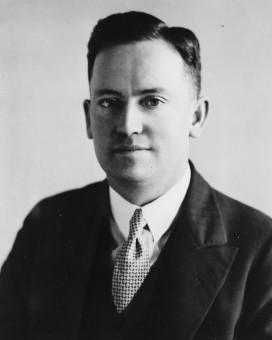Arthur William (Artie) Fadden won the rural Darling Downs seat in southern Queensland in a by-election in 1936. He contested 8 federal elections from 1937 to 1955. He held the Darling Downs seat until an electoral redistribution in 1949, and then won the seat of McPherson in 1949, and held it in the three following House of Representatives elections.
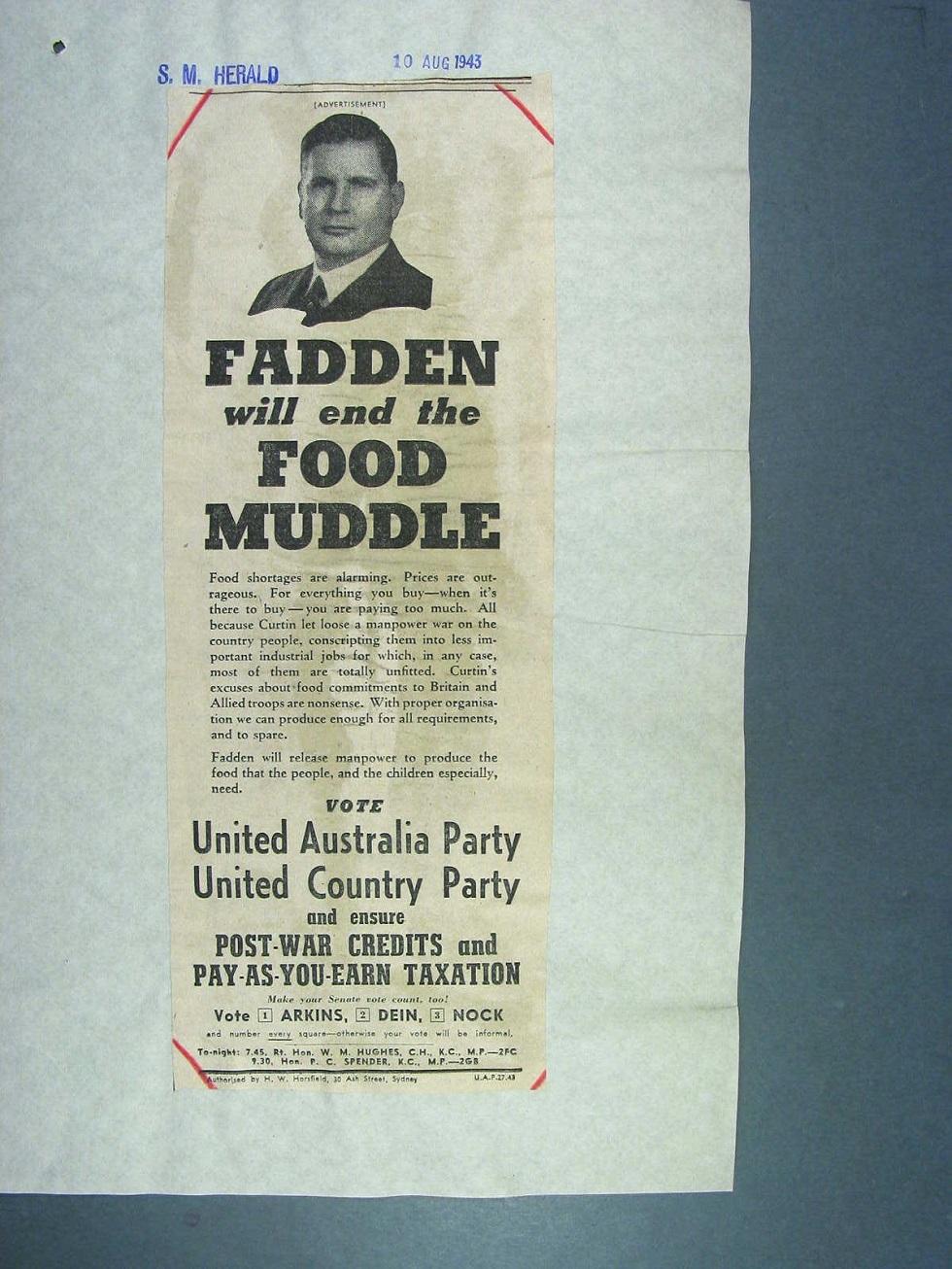
A coalition campaign advertisement for the 1943 federal election focusing on the Curtin government's wartime rationing. NAA: A5954, 598/4, p.4
19 December 1936
Fadden won the seat of Darling Downs in a by-election.
23 October 1937
The Lyons–Page government was returned with 29 seats in the House of Representatives (one was held by an ‘Independent UAP’ candidate). The government’s coalition partner, the Country Party, won 16 seats, including Fadden’s seat of Darling Downs. The Labor Party, led by John Curtin after James Scullin’s retirement, won 29 seats.
Labor made gains in the Senate, winning 16 seats to the United Australia Party’s 3.
21 September 1940
The United Australia Party, led by Robert Menzies after the death of Joseph Lyons in April 1939, narrowly retained government with the help of the Country Party. The United Australia Party won only 23 seats (and lost one when Arthur Coles declared himself an Independent) to Labor’s 32. The Country Party won 14 seats, Lang Labor 4 seats and there was 1 Independent.
The United Australia Party and Country Party won 16 Senate seats, and Labor won 3.
On 28 August 1941, Menzies was replaced as Liberal leader, and after this election Arthur Fadden replaced Earle Page as leader of the Country Party and became prime minister. Fadden was unable to retain majority support in the House of Representatives and, on 7 October 1941, John Curtin became prime minister.
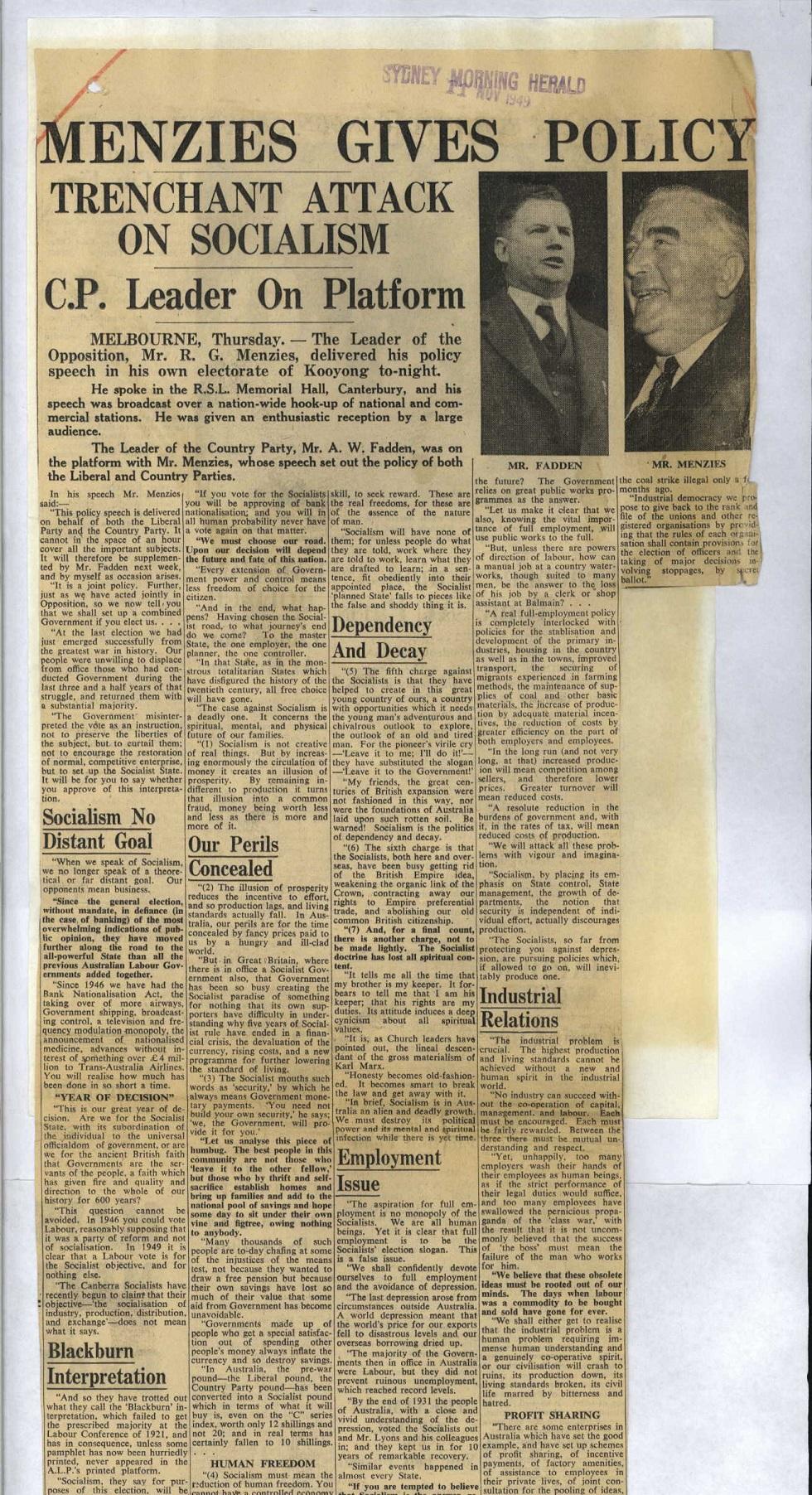
Partners again, Robert Menzies successfully campaigned for the return of a coalition government in the 1949 'election against socialism'. NAA: A5954, 2315/13, p.62
21 August 1943
Curtin won a sweeping victory at this wartime election. The Country Party was divided, and the Fadden-led Country Party won 7 seats, with 3 Country National Party, 1 Liberal Country Party, 1 Queensland Country Party, and 1 Independent in the House of Representatives. The United Australia Party won only 12 seats to Labor’s 49.
Labor won all 19 Senate seats contested.
28 September 1946
The Labor government, led by Ben Chifley after the death of John Curtin, won 43 House of Representatives seats. The Country Party won 11 seats and Robert Menzies’ new Liberal Party won 15 seats. Fadden was returned for the Darling Downs seat.
In the Senate, the Liberal and Country Party alliance won 3 seats to Labor’s 16.
10 December 1949
The Liberal Party led by Robert Menzies won government with 55 seats in the House of Representatives, to the Country Party’s 19 and Labor’s 47. In 1949, the size of the House of Representatives was increased from 75 to 121 seats. Arthur Fadden was elected member for McPherson following the redistribution.
The Senate increased from 36 to 60 seats and 42 Senate seats were contested. The Coalition won 23 seats and Labor 19.
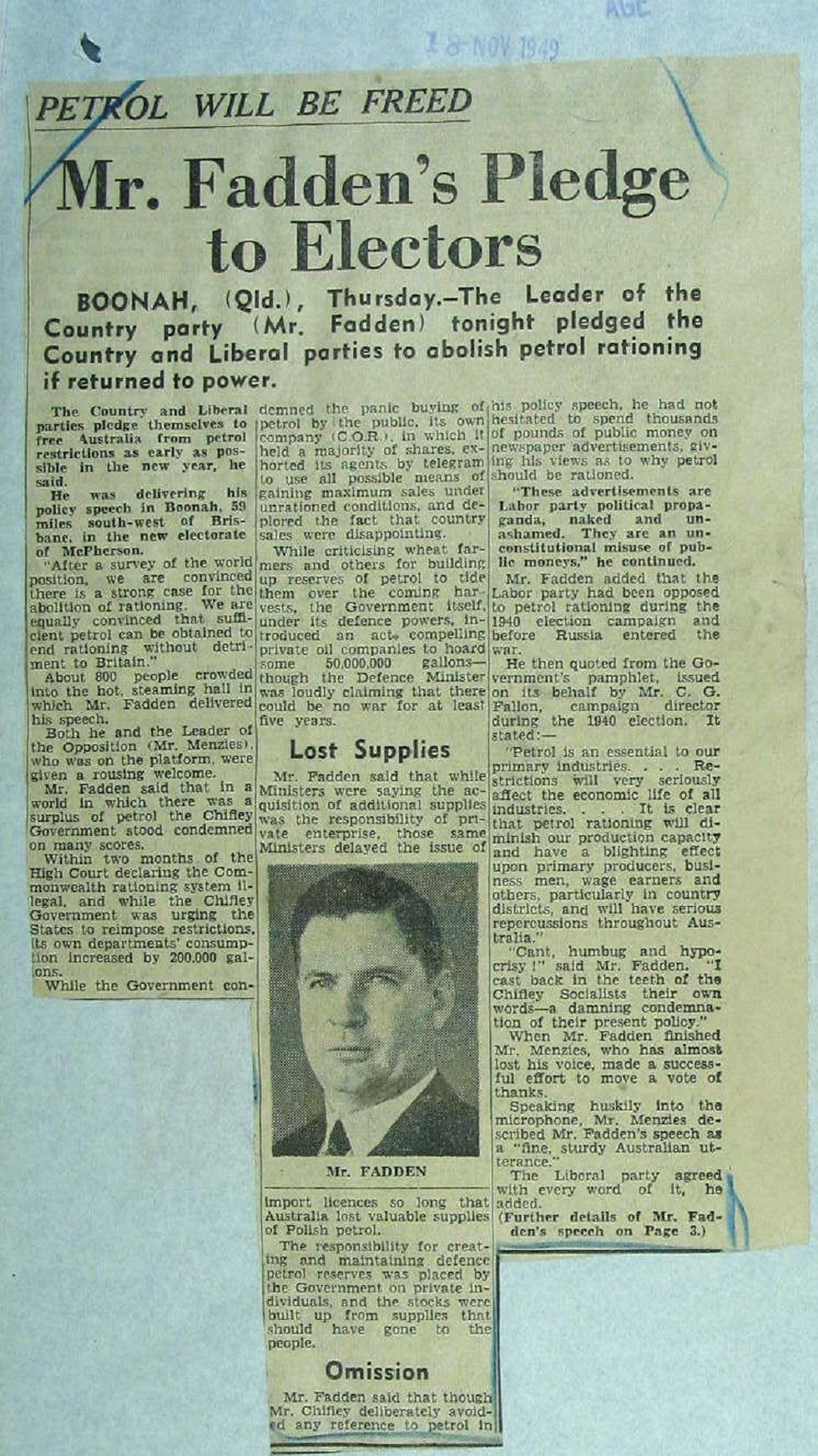
Arthur Fadden led the Liberal-Country Party coalition campaign against petrol rationing, a key factor in the Labor government's electoral loss in 1949. NAA: A5954, 2315/10, p.7
28 April 1951
This was a double dissolution election, the first since 1914. The Menzies government was returned with a reduced majority in the House of Representatives, but with control of the Senate. In the House, the Liberal Party and the Labor Party each won 52 seats, and the Country Party 17 seats, including Fadden’s seat of McPherson. Of the 60 Senate seats, the Liberal Party won 28, Labor 26 and the Country Party 6.
29 May 1954
In the aftermath of the defection of Soviet embassy officials Vladimir and Evdokia Petrov the month before, this House of Representatives election returned Robert Menzies’ Coalition government. The Liberal Party won 47 seats, the Country Party 17 seats and Labor 57 seats in the House. Fadden was again returned for McPherson.
10 December 1955
After the formation of an anti-Communist grouping split the Labor Party early in 1955, Prime Minister Robert Menzies obtained an early dissolution of parliament, on the grounds of again having simultaneous elections for both Houses. The Coalition increased its majority, with 57 Liberal and 18 Country Party seats to 47 Labor seats in the House of Representatives. Fadden won the seat of McPherson, but he retired on 14 October 1958, before the federal election held on 22 November that year.
In the half-Senate election, of the 30 seats contested, the Coalition won 16, Labor 12, Anti-Communist Labor 1 and Country-Western Australia 1.
From the National Archives of Australia collection
- NAA: A5954, 598/4
- NAA: A5954, 2315/10
- NAA: A5954, 2315/13
Sources
These brief election results relate only to this Prime Minister. They are drawn from the online sources below, where further information can be found.
Australian Electoral Commission: Election results
University of Western Australia: Australian Government and Politics Database



